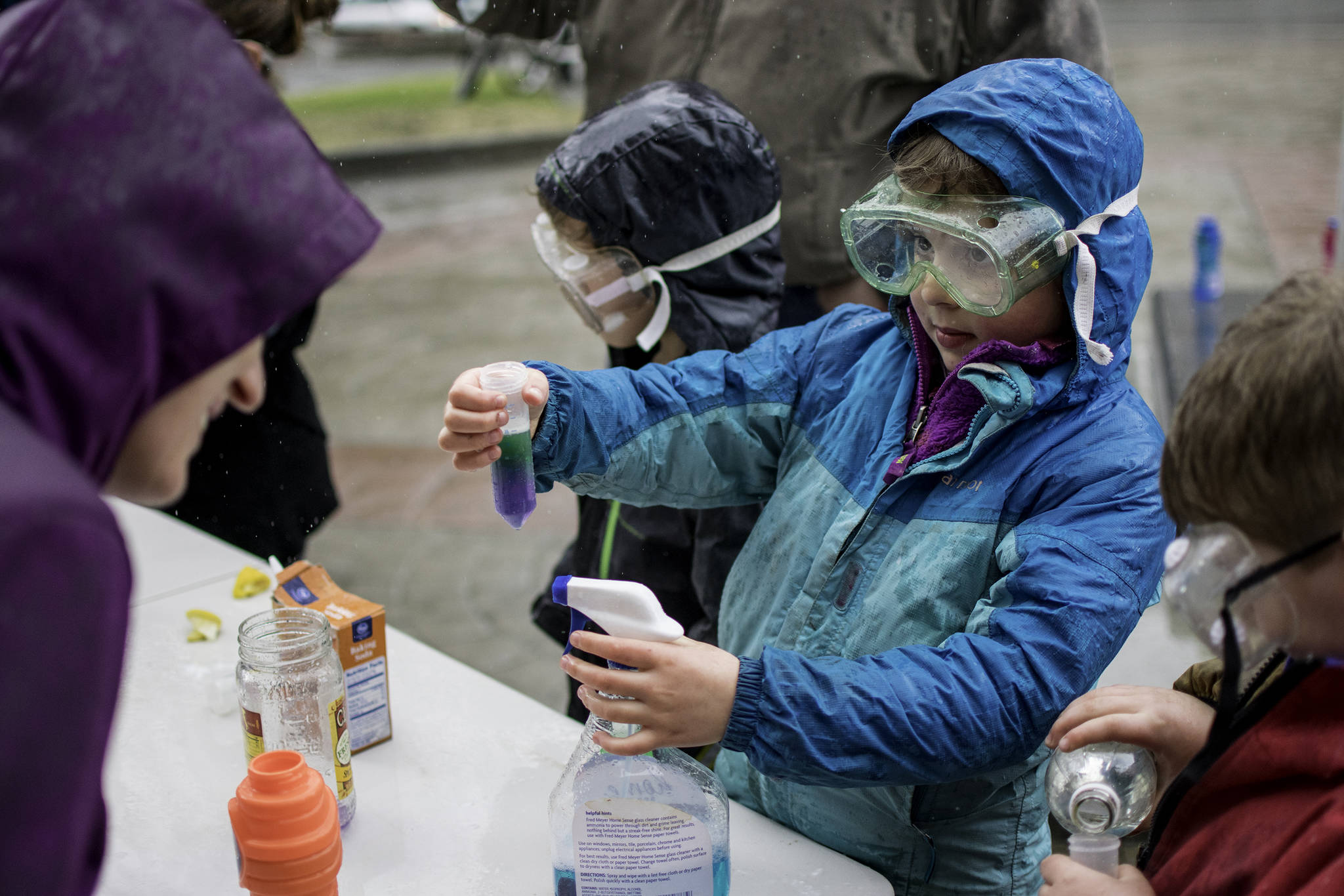Though Alaskans rallied in the rain outside the Alaska State Capitol on Saturday, urging the Alaska Legislature to boost funding for education this year, it appears unlikely that will happen.
On Saturday afternoon, the Alaska House of Representatives voted 22-18 to boost Alaska’s public school funding by $100 per student, or about $25 million in total. House Bill 339 now advances to the Alaska Senate, but the Senate Majority does not agree with the House’s plan, and without Senate agreement, that increase will not happen.
Shortly before the House voted, the Senate voted 15-4 in favor of a $1.2 billion state education budget that includes no boost in spending. Sen. Tom Begich, D-Anchorage, attempted to amend the education budget contained within House Bill 287 to include a boost to per-student funding this year, but was defeated 5-14. Sen. Bert Stedman, R-Sitka, was absent.
HB 287 does include a one-time boost for per-student funding next year, but only if the House approves some version of Senate Bill 26, a measure that places limits on the Legislature’s ability to draw money from the unprotected portion of the Alaska Permanent Fund.
As the Empire reported Sunday, the House’s coalition majority is deeply divided on what SB 26 should look like, and it isn’t clear that lawmakers in the House can reach consensus this year.
In the Senate, minority Democrats protested that forcing a vote on SB 26 was a move to coerce the House into doing something it doesn’t want to do.
“It does feel like leverage, and I don’t think you should be using education funding as leverage,” said Sen. Bill Wielechowski, D-Anchorage.
“It is not leveraging,” said Sen. Anna MacKinnon, R-Eagle River, because the House can always turn down the proposal.
“This would be entirely an accept or decline proposition,” she said.
An attempt to strip the SB 26 language from the education funding bill was defeated 8-11.
In the House, proponents of HB 339 said it will partially compensate for years without budget increases. Inflation has increased costs, leading to staff layoffs, they contended.
“While flat-funding sounds reasonable, I think we need to look at the impacts of such activities,” said Rep. Jason Grenn, I-Anchorage.
“We’ve entered a phase of educational funding that is having a negative impact on a child’s ability to succeed,” said Rep. Les Gara, D-Anchorage.
Opposition to the measure came mostly from the House’s Republican Minority, though Rep. Sam Kito III, D-Juneau, also voted against the increase in the final tally.
Rep. Tammie Wilson, R-North Pole, said adding money to the budget without addressing structural problems within the state’s education system is a mistake.
“Until we’re ready to look at the entire picture of education, I cannot support this bill,” she said.
She and others in the opposition pointed out that school districts are asking for additional money even as they teach fewer students. Rising health insurance costs and administration expenses are the problem, not a lack of money, they said.
“We’ve got to figure out a better way of doing business,” said Rep. Steve Thompson, R-Fairbanks.
After a reconsideration vote, HB 339 will advance to the Senate.
“I personally don’t think there’s support for it in the Senate,” MacKinnon told the Empire on Friday.
As originally drafted by the House, HB 287 was intended as an “early funding” bill for education. Mistakes by the House and delays in the Senate have turned it into a simple funding bill. Normally, education is included in the state’s regular operating budget.
This year, HB 287 will return to the House, where lawmakers will be asked to consider the changes made by the Senate.
• Contact reporter James Brooks at jbrooks@juneauempire.com or 523-2258.

